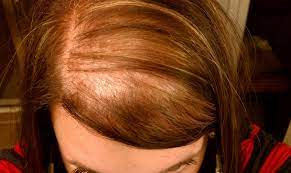Honey is not just sugar. what else contributes to oral health?
Honey is not just sugar. what else contributes to oral health? Honey is one of the most judged natural foods today. Until the fashion of using natural sweeteners began. Honey was a delicacy of the gods with a high price (if you wanted it organic). Now it seems that stevia or agave syrup has taken center stage. But none has the positive effects of this flower nectar. Yes, it contains sugar, but it also has 200 more compounds, such as water, organic acids, minerals, and polyphenols. For many years, honey has been used in traditional diets and medicines; Below we reveal what modern medicine thinks about its effect on oral health.
A recent review of several studies addresses the use of honey against Streptococcus mutans infections, dental plaque, caries, gingivitis, and halitosis. In addition, it was also used to prevent side effects related to the treatment of some types of cancer and poor wound healing.
How is honey formed?
We assume that this food is generated by bees, but I’m sure you do not know how it actually occurs. It is logical to think that it is natural since it is formed from the nectar of flowers. The bees visit hundreds of flowers and ingest their nectar in the “stomachs” destined for honey. There the digestive enzymes act on the sucrose of the nectar to decompose it into glucose and fructose.
Attention to this process: each bee will regurgitate this nectar and spit it in the mouth of another bee and the process will be repeated separately (for about 20 minutes) until the nectar is completely digested in raw honey. The bees spit the raw honey on the cells of the comb, beat their wings to dry it and then seal the product with wax. Speaking chemically, between 17 and 20% of the honey is made of water, but the rest of its flavor and color depends on the flower that comes from it.
The composition of honey has been studied with great care and it is thought that there are more than 200 compounds. About 90-95% is sugar, followed by water, organic acids, and mineral compounds.
In addition, honey also contains between 4 and 5% of fructo-oligosaccharides . Fructooligosaccharides are non-digestible substances that can help digestive health since they are a good source of prebiotics. Other compounds found are amino acids, vitamins (B1, B2, B3, B6, and C), calcium, iron, zinc, and potassium, among many others.
How can you improve our oral health?
The mouth and the rest of the body have always been taken as two different systems; that is to say, dentistry focuses on some problems and medicine on different ones. Actually, although they are different, they are very influential with each other. There are more than 100 systemic diseases and more than 500 oral medications that cause dry mouth and can affect diabetes and atherosclerosis. Our mouth is the principle of the digestive system, although it also has functions such as talking and chewing; so it is important to enjoy good oral health. Some studies confirm that honey can be a good ally against any oral problem.
Mitigates Streptococcus mutants infections
According to some observations, there are between 500 and 700 different microbial species in different areas of our oral cavity, which depend on the oral health and hygiene of each person. Healthy mouths tend to have more gram-positive bacteria and simpler colonies; Mouths with poor health tend to have more anaerobic, gram-negative bacteria and complex colonies.
Studies have shown that honey was effective in combating almost 60 species of gram-positive, gram-negative, anaerobic and aerobic bacteria. One of these is Streptococcus mutans, which is a pathogen involved in dental caries. Unlike antibiotics, science has found that until now bacteria do not become resistant to honey. So it is very useful to know against what infections honey can be used. This food stops the growth of microbes because of its high sugar content and low pH, in addition to killing the bacteria through its antibacterial factors.
For dental plaque
Dental plaque is a fine biofilm, which accumulates on the surface of the teeth. Bacteria in plaque (particularly Streptococcus mutans) metabolize fermentable carbohydrates (such as sucrose) in food and produce acids. These acids are responsible for demineralizing and disintegrating the tooth structure. This avoids cleaning actions and remineralization of saliva, which is why the start and progression of dental caries are favored.
As a solution for gingivitis
Gingivitis is the inflammation of the gingival tissues in response to the presence of bacteria in the biofilm of the plaque. It is characterized by pain and bleeding in the gums, which are usually inflamed by the edge of the teeth. Gingivitis is reversible if we perform good oral hygiene practices, but if it is not corrected, it can evolve to irreversible loss of teeth.
This inflammation is similar to that found in inflamed wounds; coincidentally, for many years, honey has been used to rapidly eliminate bacteria from wounds. There was a study in which 20 patients with orthodontics participated, to know how honey influenced pH, bacterial count, and bacterial growth compared to sucrose. It was shown that the pH did not fall below the pH threshold of 5.5, reduced bacterial counts and inhibited bacterial growth. With only 20 patients, the scientists recognized that the study was limited and that extra studies should be done to know the real possibility of honey.
Eliminates the bad oral odor
Bad smell in the mouth (halitosis) is usually detected when a person speaks and has an unpleasant odor. Within the mouth, the anterior part of the back of the tongue, subgingival areas, poorly made restorations (crowns and bridges with leaks), dental implants or dental prostheses, are the most likely to present halitosis.
In these cases, honey can combat odor, although it may not be effective on silver-coated pieces. According to studies, honey combats bacterial colonization in wounds and provides nutrients for bacteria. So they produce lactic acid during metabolism instead of malodorous gases.
Prevents cancer
Honey has been studied for its anti-cancer properties. Some have shown that the treatment of carcinomas with varying concentrations of Tualang honey was effective in causing a cell-dependent dose and time-death. It was observed that the inhibitory concentration of 50% was in 4%. And the maximum inhibition of cell growth was in 15%.
The studies also showed that honey promoted an inhibitory effect dependent on time and dose. More research is still needed to understand honey as an anticancer agent.
Mitigate the harmful effects of cancer treatment
Radiation is a very useful tool to treat different types of cancer. It is even used after a surgical intervention or chemotherapy. This therapy is shown to be effective in increasing survival rates for up to 5 years. But it has important side effects. When the side effects cause a need to interrupt the treatment. The therapeutic benefit of the radiation is also reduced.
Some researches analyze the effects of honey to prevent or improve mucositis, xerostomia and wound healing, and it seems to provide benefits in this area.

















